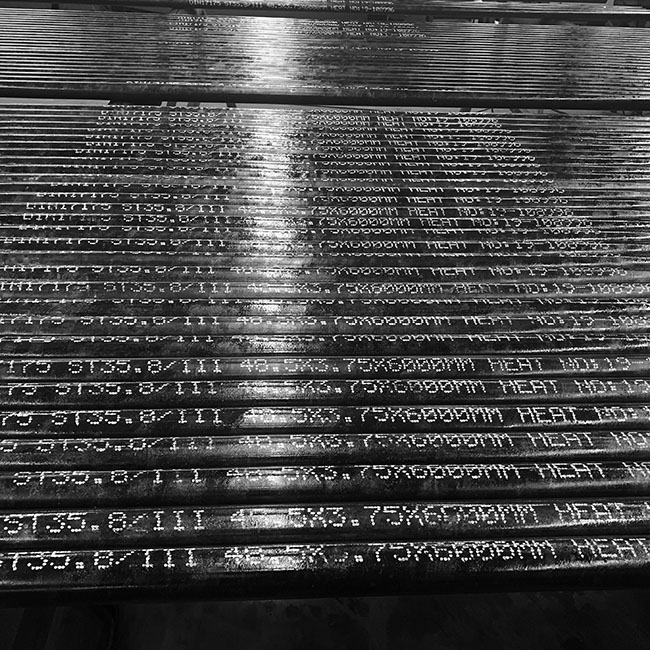Product Overview
It is engineered to optimize energy transfer in medium and large-scale pipeline networks—even in regions with extreme temperature fluctuations (such as northern industrial zones with -20℃ winter lows and 35℃ summer highs)—balancing durability and operational efficiency for industrial applications. The tube’s low-density structure also reduces transportation and installation costs, as it requires fewer lifting equipment and labor hours compared to heavier alloy alternatives.

Product Features
Material Superiority: Crafted from low-carbon steel with 0.06–0.18% carbon content and 0.27–0.63% manganese, this composition not only ensures excellent weldability (compatible with MIG, TIG, and arc welding processes) but also reduces brittleness—enabling minor bending adjustments during on-site installation without cracking. The material also meets ASTM A179’s purity requirements, with sulfur and phosphorus contents limited to ≤0.035% each to avoid internal corrosion.
Thermal Performance: Boasts a heat transfer coefficient of 800–1200 W/(m²·K), outperforming traditional carbon steel tubes by 30–50% and stainless steel tubes by 15–20% in crude oil and natural gas transfer scenarios. This efficiency translates to a 12–18% reduction in energy consumption for pipeline heating/cooling systems, according to field tests in petrochemical plants.
Structural Stability: Withstands operating pressures up to 10 MPa and temperatures ranging from -20℃ to 450℃, suitable for diverse pipeline media (including crude oil with 5–8% sulfur content, natural gas with trace hydrogen sulfide, and treated industrial water). The tube’s wall thickness (ranging from 1.5mm to 6mm, customizable) is uniformly distributed, avoiding pressure concentration at weak points.
Surface Finish: Cold-drawn processing delivers a smooth inner surface (Ra ≤ 1.6μm) and outer surface (Ra ≤ 3.2μm), minimizing fouling from sediment or viscous fluids. This finish also reduces fluid flow resistance by 8–10%, further enhancing the efficiency of pipeline transport systems.
Applications
Pipeline Transport: Ideal for crude oil pipelines (where its thermal efficiency prevents wax deposition in low temperatures), natural gas transmission lines (resisting trace corrosive gases), and drinking water pipelines (material meets NSF/ANSI 61 standards for lead-free safety, no harmful substance leaching).
Industrial Sectors: Used in petroleum refining (for distillation tower heat exchange circuits) and chemical processing (for ethylene glycol and methanol temperature control systems), where its corrosion resistance to mild chemicals extends equipment lifespan.
Power Generation: Integrated into coal-fired and natural gas-fired boiler systems for waste heat recovery—specifically in flue gas heat exchangers, where it captures residual heat to preheat feedwater, cutting fuel consumption by 5–7%.
FAQ
Q: What is the maximum length available, and what is the production cycle for custom lengths?
A: Standard lengths range from 6m to 12m (in-stock for immediate delivery); custom options up to 18m have a production cycle of 7–10 working days, with no minimum order quantity for customizations.
Q: Is it compatible with corrosive media, and what additional anti-corrosion treatments are offered?
A: The low-carbon steel base resists mild corrosion (e.g., 5% sodium chloride solution); for acidic/alkaline environments (pH 2–12), we offer epoxy coating (thickness 100–150μm) or 316L stainless steel cladding (thickness 0.5–1mm), extending service life by 3–5 years.
Q: What testing does it undergo, and do you provide test reports?
A: Each batch passes hydrostatic pressure tests (1.5x working pressure for 30 minutes), dimensional accuracy inspections (via laser diameter measurement), and chemical composition analysis (using a spectrometer). Certificates of compliance (CoC) and test reports are provided free of charge for each shipment.















